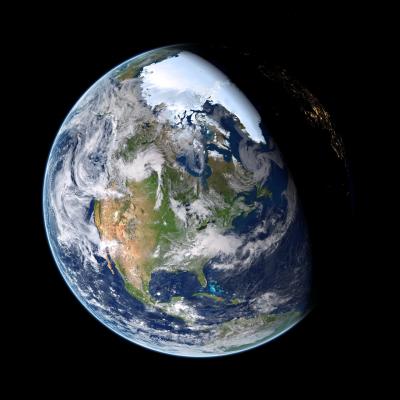Grab your coat, boots, hat, and gloves as we prepare to head to the Arctic!
 The resources on this page will focus on the Arctic region and the animals that live there.
The resources on this page will focus on the Arctic region and the animals that live there.
The Arctic is the area at the top of the Earth, surrounding the North Pole. If you look at a globe, the Arctic is the “roof” of the Earth, and the Antarctic is the “basement” of the Earth at the South Pole. Polar bears live in the Arctic while penguins live in the Antarctic. We never see penguins and polar bears together in the wild!
The land of the Arctic is usually covered with snow, ice, or tundra. A tundra is a very cold plain with few trees but lots of moss and grasslike plants. The moss and plants provide food for the animals. The ground under the roots of the plants is always frozen; this is called the permafrost. Because this ground is frozen, there is nowhere for water to go. The water will freeze in the winter, or dries up from the sun in the summer.
So, how cold does it get in the Arctic? The average Arctic winter temperature is -30°F, while the average Arctic summer temperature is 37-54°F, and the coldest recorded temperature is approximately −90°F! In general, Arctic winters are long and cold while summers are short and cool. High winds often stir up snow, creating the illusion of continuous snowfall. In the Arctic during summer, there are nights when the sun never sets. This is because during summers there, the North Pole points toward the sun; sometimes, it's called the "Land of the Midnight Sun."
Most of the Arctic is ocean. Although the air and ground can get very cold, the water of the Arctic seas never drops below 28°F. That is similar to how cold your water gets when it turns to ice. Many Arctic animals live in the oceans while others depend on the oceans for food.
Vocabulary and Definitions
Arctic: The regions around the North Pole. It is extremely cold with very little light in winter and very little darkness in summer.
Inuit: A member of the peoples living in the Arctic regions of Alaska to eastern Canada and Greenland. This term replaces the familiar word “eskimo” to include all peoples of the arctic region.
Igloo: A dome-shaped house built from blocks of snow.
Walrus: A large, fatty animal which lives in the sea. It has a tough hide (skin) and two long teeth called tusks that point downward.
Caribou: A large deer of the Arctic region, having large, branched antlers in the male and female; also occurs in Europe and Asia, where it is called a reindeer.
Polar Bear: A large, white bear of arctic regions, usually feeding on fish and seals.
Seal: Any of two families of sea carnivores (meat eaters) with a doglike head, torpedo-shaped body, and four webbed feet or flippers; they live in cold or temperate waters and usually eat fish.
Sled dog: A husky, malamute, or other dog trained to pull a dog sled.
Turn and Talk
Use these prompts to start a conversation.
- What do we need to wear in the winter when it’s cold outside?
- How do you think animals keep warm in the winter? Answer: The fur and fat keep them warm.
- Would you like to live in a place that has snow all year? Why or why not?
- Would you like to live in an igloo? Remember, there is no electricity for TV or ovens for cooking, and everyone shares the same room!
- If you lived in the Arctic a long time ago when there were no stores or restaurants, where do you think the people got their food or tools? Answer: By hunting animals. The Inuit people would hunt animals for food and use the fur for their clothes and the bones for tools.
Explore MPM's Exhibit
Google Street View
Take a virtual walk through the Museum’s Arctic exhibit!
At Home
Winter Walk Bingo
Build an Igloo
Animal Image Cards
Vocabulary Tracing Pages*
*Download Spanish here.
Video Resources
National GeographicMake Blubber
Recommended Reading List
The Polar Bear Son: An Inuit Tale by Lydia Dabcovich
Arctic Fives Arrive by Elinor J. Pinczes
Hello, World! Arctic Animals by Jill McDonald
Over in the Arctic: Where the Cold Winds Blow by Marianne Berkes


